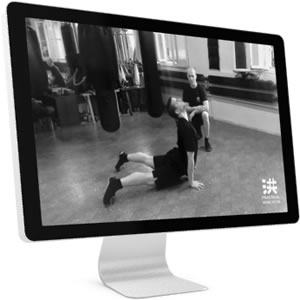 The 4 most famous southern weapon forms with the long single-ended pole (Daan Tau Gwan) are “Six and Half Point Long Pole” (Luk dim bun gwan), “The Flowing Water Long Pole” (Lau Seui Gwan), the “Left-Handed Fisherman´s Long Pole (Jo Sau Diu Yu Gwan) and the “Fifth Son Eight Trigrams Long Pole” (Ng Long Baat Gwa Gwan).
The 4 most famous southern weapon forms with the long single-ended pole (Daan Tau Gwan) are “Six and Half Point Long Pole” (Luk dim bun gwan), “The Flowing Water Long Pole” (Lau Seui Gwan), the “Left-Handed Fisherman´s Long Pole (Jo Sau Diu Yu Gwan) and the “Fifth Son Eight Trigrams Long Pole” (Ng Long Baat Gwa Gwan).
“The Left-Handed Chinese Opera Six and Half Point Long Pole” (Jo Sau Baan Jung Luk Dim Bun Gwan) is, together with “Geui Chung’s Big Circling Moon Double Knives” (Geui Chung Daai Hang Yut Seung Dou) and the “Arrow Palm” (Jin Jeung), considered the “Orthodox Siulam” (Siulam Jing Jung) heritage of the Lam family.
“Six and Half Point Long Pole” comes from the circle of “Red Junks of the Chinese Opera” (Hung Syun Hei Baan), where the Venerable Ji Sin (Ji Sin Sim Si), the last abbot of the Southern Chinese Siulam temple, hid from his Ching pursuers. Ji Sin is tied to the “Six and Half Point Long Pole” in most Southern Chinese legends, for example Wingcheun; if you compare the long pole techniques of Hung Kyun and Wingcheun, it is more than likely that they share common roots.
There is actually seven techniques (concepts) – however, the number seven was tabooed in the secret societies due to “The Seventh Ma´s” betrayal – therefore, six and a half concepts. For more info please check out the article Wing Chun: Mystery of the Half Point.
Lam Saiwing, the first patriarch of the Lam family Hung Kyun lineage, later incorporated the techniques from “Six and Half Point Long Pole” into the “Fifth Son Eight Trigrams Long Pole”.
Within our Practical Hung Kyun curriculum, we have taken out the “Left-Handed Long Pole” from the “Eight Trigrams Long Pole” set and teach it on the 2nd level of our Practical Hung Kyun curriculum.
The weapon itself is of standard size, “seven feet and two inches” (chat chek yi chyun), i.e. approximately 240 cm. In order to strengthen the body, however, the practice staff is often heavier and longer. The form itself is preceded by conditioning drills, basic stationary and mobile drills and separate sections from the form, which is still one of the shortest in our system.
The application of various techniques is honed through various aplication drills, progressively leading into free-form fighting. The basic philosophy behind the long pole is concisely put into the proverb “the staff will not make a second sound” (gwan mou leung sing) – meaning the weapons should clash once at the most, the next technique must be fatal for the opponent. “Shadow” techniques and fighting practice are supplemented by several special drills, aimed at developing “skill” aspects – encircling with a staff, stabbing at a static and moving target etc; the form itself, performed in the “orthodox” guard (left leg in the front), develops strength, accuracy and other aspects of bare-hands fighting.
Pavel Macek Sifu, Practical Hung Kyun
If you like the article and if you want to support our work, please add your comment, click “tweet” or “like”. Your support will help us and encourage us to publish and share more articles and videos in the future!
Thank you for every visit, “tweet”, “like” or comment!
Upcoming Events!
[events_list]
-

Chinese Martial Arts: The Secrets of the Old Grandmasters
$9,95 Add to cart -
Sale!

PHK Intro Kit: Beginner’s Guide to Chinese Martial Arts
Original price was: $149,00.$79,00Current price is: $79,00. Add to cart -

Chan Hon Chung Sifu – “Moon Shadow Hand & Kick Poster
$9,95 Add to cart -

Chan Hon Chung’s Tiger and Crane Double Form Set Manual
$19,95 Add to cart
![]()

